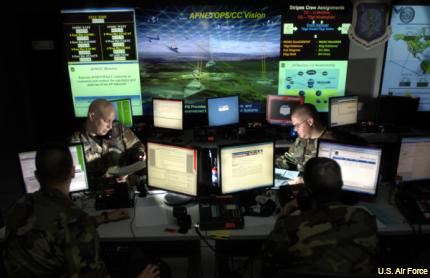Air Force launches new task force to focus on cyber threats
The Task Force Cyber Secure is seen as essential to establishing a culture change with regard to cyber defense.

As part of ongoing efforts to bolster cybersecurity in the military services, the Air Force has established a new task force designed to better understand and address cyber threats.
Chief of Staff Gen. Mark Walsh III signed a memorandum that established the Task Force Cyber Secure to “address challenges of the cyberspace domain in synchronization, operations and governance within the Air Force and with those organizations it supports,” according to an Air Force release.
The three main areas the task force will focus on, as outlined by Lt. Gen. Bill Bender, Secretary of the Air Force chief of information dominance and chief information officer, are diagnosis of the extent of the cyber threat and vulnerabilities that impact core missions, make plans for risk management development to enable aircraft to fly and win in cyber-contested domains and, lastly, make recommendations for investment priorities on how to address cybersecurity challenges.
“This task force is fundamental to understanding the inherent risks within the cyberspace domain and instituting a culture change, in which our airmen realize the impact cybersecurity has on all the Air Force core missions,” Welsh said.
While the Air Force has put a focus on efforts to protect information technology in the cybersecurity realm, Bender said this covers only 20 percent of the problem. To address the other 80 percent, he envisions a “comprehensive, enterprise-level look at the cyber threat as it relates to everything outside of that 20 percent.”
The task force will provide strategic planning and programming throughout fiscal 2017 and beyond. Moreover, the task force will provide a governance plan for Air Force corporate board management and synchronization of cybersecurity investments in the planning, programming, budgeting and execution process, the release said.
The creation of the task force is one of a number of efforts within thte Defense Department and the military services to bolster cybersecurity. The Army, for example, took similar steps back in September to establish a Cyber Protection Brigade at Fort Gordon, Ga. A month later, the Navy launched its Task Force Cyber Awakening. And the services and the U.S. Cyber Command also are steadily expanding their cyber workforces.
Mission assurance and cybersecurity were studied across both the Defense Department and the Air Force’s multiple functional lines and major commands. One of the top priorities of the task force is to include stakeholders working on the cyber challenge and “begin synchronizing and coordinating efforts for securing and mitigating operational risk to the most critical nodes and ‘centers of gravity.”
“At a practical level, sharing information across the Air Force, education on the seriousness of the threat and the vulnerabilities, and connecting the dots are the benefits I’m beginning to see,” Bender said. “We are also connecting with academia and commercial industry because we recognize their contributions as significant force multipliers in this domain.”
The Air Force also announced that Pete Kim, Cyberspace Operations and Warfighting Integration acting director, will be leading the daily task force operations.




